Rise and shine DOM team! It is 4:00 in the morning at Lake Fryxell Camp. Time for us to take a half-hour walk down the frozen Lake to the Canada Stream to collect stream data, and four forty-five pound jugs of Canada Stream water. The jugs, called Carboys, were the reason for the early morning hike to the stream. We had to get the Carboys back to Camp by 9:00 am so a helicopter heading to McMurdo could pick them up and deliver them to two DOM team members working in our lab, Yo Chin and Chip Kilduff. Yo and Chip arrived at McMurdo the day the rest of the DOM team took off for Lake Fryxell. While we are out at Camp collecting stream data and water, Chip and Yo are setting up other science equipment at the McMurdo lab.
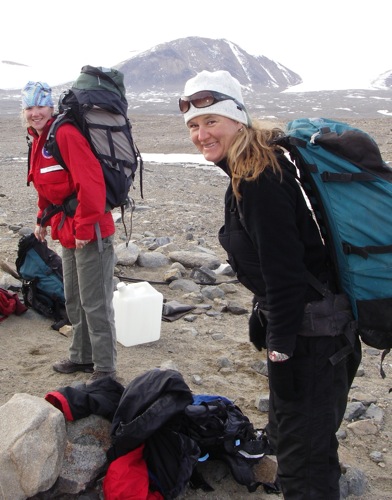
With the Carboys of Canada Stream water safely nestled into the cargo hold of the helicopter, the DOM team took a few hours to rest and complete small tasks around camp before taking off on a field trip! Around noon, we all strapped on our large hiking packs with a clean change of clothes, shampoo and other toiletries, camera equipment, some science stuff, and other odds and ends and began a long hike through the valley and over the Canada GlacierA mass of ice that persists for many years and notably deforms and flows under the influence of gravity. to Lake Hoare on the opposite side of the GlacierA mass of ice that persists for many years and notably deforms and flows under the influence of gravity..
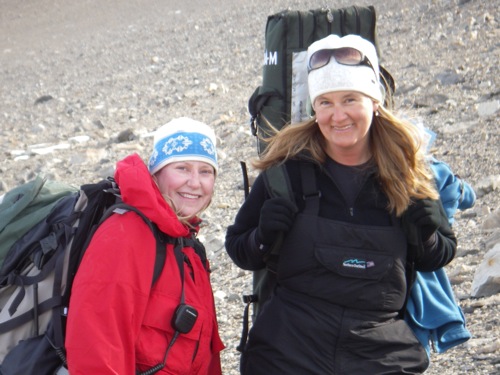
The hike to Lake Hoare was about six miles and took a little over 3 hours. We started by rock hopping uphill until we were well up the Valley hills. We always try to hop from rock to rock while walking around the Dry Valleys because footprints can remain in the soils around here for years since there is little organic matter to cover up or move over the prints. It is a bit of a game to hop from rock to rock, although with a large pack on my back the hopping was not quite as much fun. After hopping from Valley rocks for over an hour we made it to the Canada GlacierA mass of ice that persists for many years and notably deforms and flows under the influence of gravity.!
Before stepping onto the Canada GlacierA mass of ice that persists for many years and notably deforms and flows under the influence of gravity., we all strapped Stabilicers onto the bottom of our boots. The Stabilicers look like a flip-flip with Velcro straps around the toe area and the ankle and they have studs screwed into the bottom of them that help get a good grip when walking over ice and snow. Up on the glacier there is a safe route marked out with red flags for hikers to follow. We all quickly learned to walk on patches of ice rather than through the snow, because the snow was quite soft and you could easily crash through past your knees!
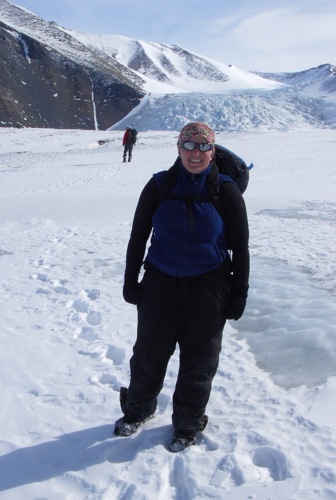
The walk down the Lake Hoare side of the glacier was a bit treacherous. There was a ridge of loose rocks and gravel with streams covered by a thin layer of ice on each side. Heidi took to calling the rock ridge the "Dragon Spine," which I think is appropriate- the "spine" is jagged, spiky, and stretched for a long distance. However, the views of the glacier on the trip down were awesome and took my mind off the walk quite often. There were waterfalls, streams, icicles, amazing crystal-like ice formations, and wonderful sounds from the streams and ice cracking. WOW!
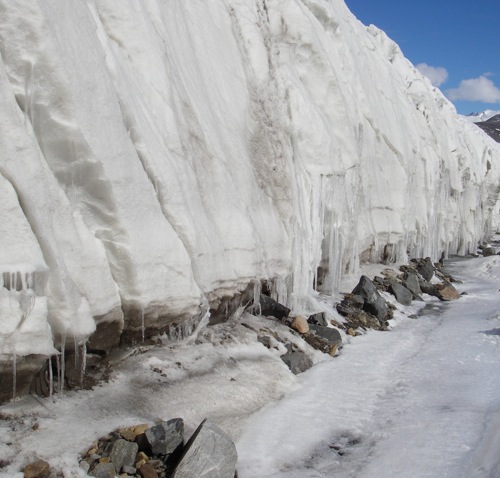
There was the best treat waiting for us at the base of the Dragon Spine- the Lake Hoare Camp! The camp at Lake Hoare has a manager, Rae, and her assistant, Becky, who oversee everything at Lake Hoare, on top of supporting and traveling to and from all the other camps in the Dry Valleys. The Lake Hoare Camp is similar in style to my camp at Lake Fryxell- bedrooms are tents, small buildings for labs, and other outbuildings for storage or extra camp visitors.
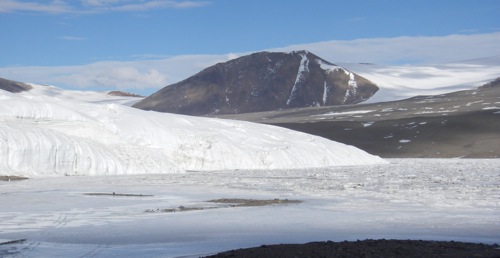
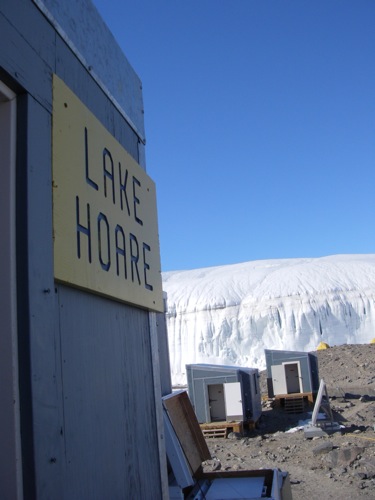
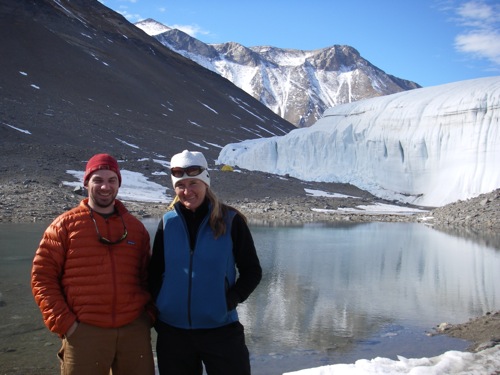
The greatest treat at Lake Hoare, aside from meeting new people and the dinner that Rae made, was the shower building. A propane heater keeps the room at almost sauna-like temperatures. Water for the shower comes from a nearby stream and hunks of ice from the Canada GlacierA mass of ice that persists for many years and notably deforms and flows under the influence of gravity. and is either heated in a huge pot on top of the heater or kept warm or cold in other pots around the room. Water is poured into a solar-shower bag and while taking a shower you stand in a metal pan to trap the water. You have to remember to empty the metal pan in to a grey-water bucket otherwise, it will spill over onto the floor. At the end of the shower, the now-clean person needs to add more water into the pots, empty the soapy, used water into a huge barrel of grey-water outside the shower building, and tidy up for the next person. For the DOM team, this was our first shower in almost a week and we all felt so shiny and, to use Christine's description, "fluffy" afterward.
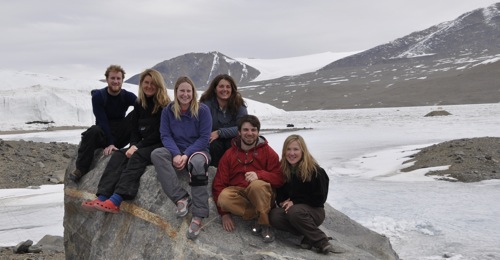
Rae makes dinner for everyone at the Lake Hoare camp Monday-Saturday. On the menu while we were visiting were Meat Lasagna and Vegetarian Pesto Lasagna, garlic bread (on English muffins), and a delicious fresh-baked Carrot-Raisin cake with cream cheese frosting. Oh my goodness, was I such a happy, and very full Antarctic camper at the end of the meal! It was extra special because our friends who were at Lake Fryxell when we first arrived at camp are now staying at Lake Hoare and the DOM team loved chatting with Jeb, Kevin, Jeff, and Adam again.
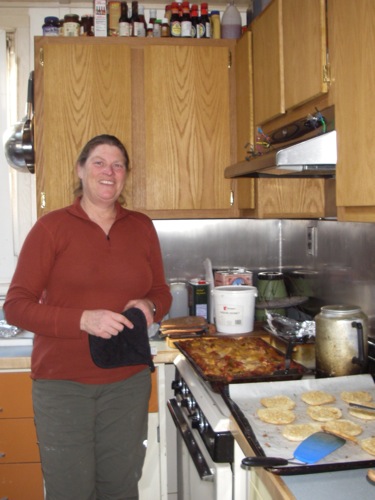
The walk back up Dragon Spine after the filling dinner and toasty warm shower was difficult because of my full belly, but did not seem to take as long as the trip down earlier in the day. Is it not amazing how a hike feels so much shorter on the return than it does on the way out? I guess it is because I knew the route and could anticipate so much of the path.
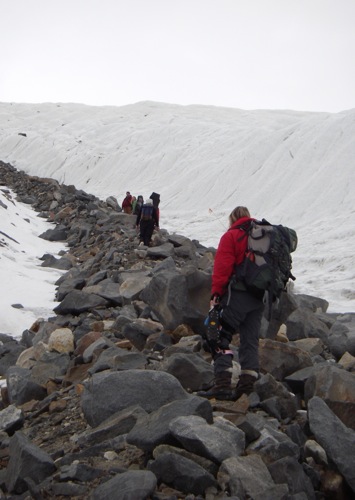
On our way back across the Canada GlacierA mass of ice that persists for many years and notably deforms and flows under the influence of gravity., we stopped to take a couple cores of ice from the top of the glacier. Birgit had a lightweight ice-corer in her bag that we used to remove cores of the ice. The ice-corer was a metal tube, about 4 feet long and 4 inches in diameter, with a t-bar on top to make twisting easier and a special metal compound wound around the outside like the threads on a screw. We placed the ice-corer over Cryconite holes and tried to remove the ice, sediment, and bacteria in the holes as one long, unbroken tube. Unfortunately, the ice was quite layered and kept coming out of the corer as hockey pucks, rather than as a beautiful tube. Cryoconite holes form where sediment blows onto the glacier and collects into little pockets in the snow. When the sun is shining, the dark sediment melts the snow and the sediment slowly creeps deeper and deeper into the glacier, but remains as a consolidated mass. Often there are bacteria on the sediments and the Cryoconite holes become productive areas for bacteria to live.
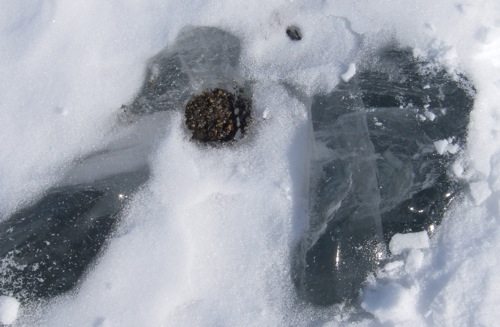
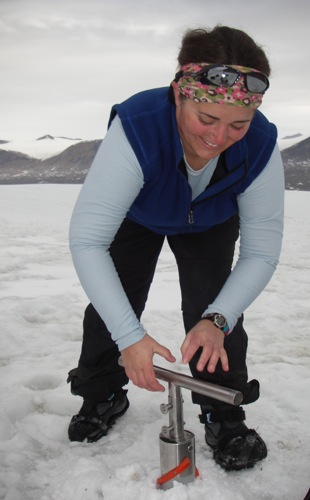
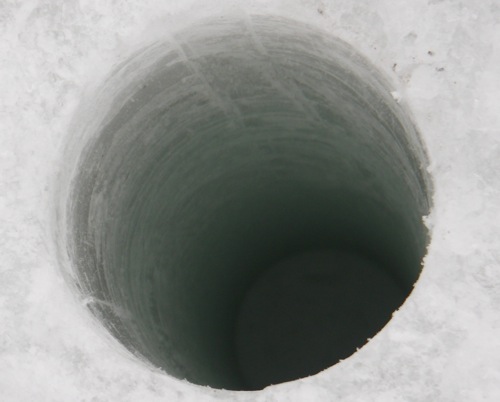
The view from the glacier was amazing! I could see Lake Fryxell, the Commonwealth GlacierA mass of ice that persists for many years and notably deforms and flows under the influence of gravity., Mount Erebus, and other Mountains of the Transantarctic Range.
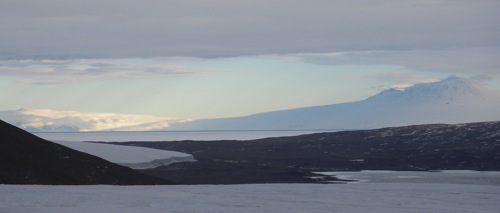
We arrived back at Lake Fryxell around 12:30 at night. The sun was still shining down upon us, as it does not set at all this time of year. After my team spent a little time perusing some of my previous PolarTREC journals and giggling at pictures of themselves and their various good and bad hair days, we all stumbled off to our tents for a very well deserved rest.


Comments